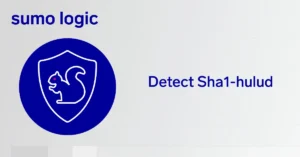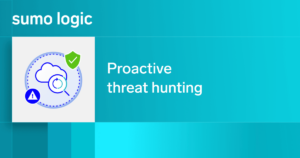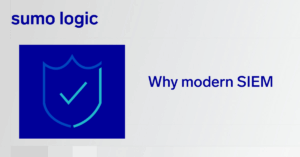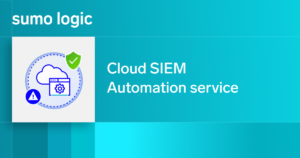
Palo Alto Networks acquired IBM QRadar SaaS assets, leaving several organizations in limbo and uncertain about the future of their security information and event management (SIEM). Security teams grapple with a complex and potentially disruptive transition as Palo Alto Networks pushes and even mandates migration to its relatively new XSIAM platform.
The acquisition also leaves customers with fewer options and a risk of vendor lock-in, as Palo Alto Networks’ XSIAM platform includes their EDR/XDR solutions and isn’t available separately. Palo Alto’s XSIAM is marketed as a state-of-the-art solution, promising advanced AI capabilities, cost savings, and enhanced threat detection.
This might seem like a logical next step to improving security operations. But wait, are you stepping into a trap?
Unpacking the five critical SIEM capabilities: Understanding XSIAM’s limitations
Like non-negotiables in any marriage, there are critical SIEM capabilities as a CISO or decision maker; you cannot compromise with your security vendor. As you evaluate your SIEM solution, do you know if Palo Alto XSIAM has these?
Comprehensive log ingestion
Logs are the DNA building blocks of a SIEM. For effective threat and anomaly detection, it is crucial that a SIEM solution has access to comprehensive data from all sources, allowing it to make informed decisions.
Logs create a trail of what happens throughout companies’ applications, systems, endpoints, networks and all infrastructure. Without complete data integration, companies may find themselves operating with incomplete insights, as alerts may lack the critical context necessary for thorough investigations.
While Palo Alto’s XSIAM can integrate with its own EDR and firewall systems, it faces challenges in ingesting logs from third-party sources like cloud service logs and SAAS application logs, potentially creating gaps in security posture. This limitation can restrict overall security visibility, increase investigation time, elevate organizational risk and could also potentially lead to compliance failures.
Automated alert triaging and correlations
Automated correlation and alert triaging, the brain or engine of a SIEM, is critical for an organization to make sense of what the data is telling you. What value does the data hold if you cannot derive automated insights from it?
Often, a single event or alert may not raise a red flag; however, a pattern of correlated events across multiple instances can indicate an anomaly. Correlations with insights combining contextual information across various sources displayed in a single view is a nonnegotiable capability that you should look for in a potential SIEM solution.
XSIAM lacks both automated alert triaging and advanced correlation capabilities, forcing analysts to spend their valuable time triaging alerts instead of incident investigation or strategic threat hunting. One of your crucial tasks is to optimize the use of full-time employees and security analysts by automating tasks with effective tools.
Ease of use and deployment
Ease of use and deployment is critically important for SIEM to enable better adoption, faster onboarding and enhanced collaboration.
Disjointed products like Palo Alto’s XSIAM can hinder critical investigations, with fragmented SOC workflows across different consoles for EDR, network and cloud data. As you aim to build and position your team for future success, you must avoid solutions with steep learning curves and disjointed UIs and workflows.
Vendor agnostic SIEM – avoiding single point failure
The recent CrowdStrike outage, which unexpectedly disrupted flights, banking services, and even emergency systems, underscores the critical need for organizations to avoid single points of failure. These vulnerabilities, previously associated mainly with supply chain issues, now extend to critical infrastructures and systems, potentially leading to far-reaching consequences.
To access Palo Alto’s XSIAM, you must purchase its EDR/XDR solution, as XSIAM is exclusively bundled and cannot be obtained as a standalone product. While consolidating with a single vendor may offer benefits such as operational strength and economies of scale, the risk of a single point of failure significantly increases.
Dashboards
Effective dashboards are essential for security analysts and CISOs, offering the tools needed to report on incidents, assess security risks, and quickly interpret data and insights. However, Palo Alto’s XSIAM falls short in this regard, lacking robust out-of-the-box (OOTB) dashboarding and visualization capabilities. This limitation forces analysts to navigate between multiple views, resulting in inefficient workflows and increased frustration.
Choose a SIEM vendor that alleviates your pain
You need a SIEM solution that gets work done, not one that is forced on you. Invest in efficiency, scalability and getting the job done. An effective and successful CISO knows that freebies won’t cover the costs of failures or breaches; only a good SIEM will. At Sumo Logic, we believe in empowering SOC analysts with the right tools and features to tackle real threats effectively.
Sumo Logic saves an average of four hours per threat investigation while reducing false positives by 90% to quickly and thoroughly understand the impact of an attack.
|
Recent IDC research that analyzed the impact of Sumo Logic security solution found:
|
How does Cloud SIEM deliver on the SIEM non-negotiables?
Looking at the above non-negotiables, Sumo Logic’s Cloud SIEM is a standout choice. It excels in comprehensive data ingestion, offering robust capabilities for interpreting and distributing information. With an intuitive interface and unique normalization capabilities, it supports both structured and unstructured data, ensuring valuable insights aren’t lost due to schema limitations.
Cloud SIEM leverages AI-driven alerting and automated alert triaging to efficiently manage and respond to security threats. Its correlation features use established rules for known threats, as well as dynamic subquery-based methods for identifying new, emerging threats. This proactive approach is crucial for preventing future attacks.
As a vendor-agnostic solution, Sumo Logic provides flexibility and avoids vendor lock-in. It also includes advanced dashboards, such as Sankey charts and box plots, along with a range of out-of-the-box (OOTB) dashboards designed for optimal use by security teams. These visual tools cater to both executives and security practitioners, offering clear and actionable insights.
Special migration incentive packages
Migration is challenging at the best of times. Whether you’re forced to migrate from QRadar Cloud to XSIAM or a new provider, it’s a daunting task that can expose organizations to risk. However, these best practices can make the process less painful.
At Sumo Logic, we recognize the challenges and costs of migration. To assist with this process, we offer a wide range of professional services to ease your transition. Contact our sales team for more information and to explore special incentives or offers.
Discover the market landscape in the 2024 Gartner Magic Quadrant for SIEM.




